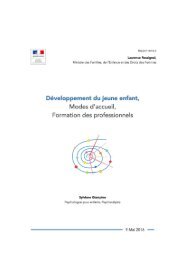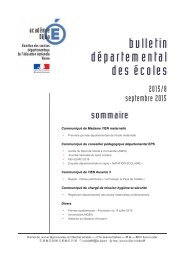agrl_innovations_in_ssa.pdf?utm_content=buffercb41d&utm_medium=social&utm_source=twitter
agrl_innovations_in_ssa.pdf?utm_content=buffercb41d&utm_medium=social&utm_source=twitter
agrl_innovations_in_ssa.pdf?utm_content=buffercb41d&utm_medium=social&utm_source=twitter
Create successful ePaper yourself
Turn your PDF publications into a flip-book with our unique Google optimized e-Paper software.
Presently when groundnut purchases are delivered to NASFAM’s central store, samples<br />
are taken for aflatox<strong>in</strong> test<strong>in</strong>g at NASFAM’s laboratory. International standards require that<br />
<strong>in</strong>dependently taken samples are analysed by <strong>in</strong>ternationally accredited laboratories. At<br />
present the Malawi Bureau of Standards (MBS) is not yet accredited, so samples are taken by<br />
SGS, an <strong>in</strong>ternational company that specialises <strong>in</strong> <strong>in</strong>spection, test<strong>in</strong>g and certification services.<br />
Samples are then sent to laboratories <strong>in</strong> either Kenya or South Africa.<br />
Hav<strong>in</strong>g successfully established a system for monitor<strong>in</strong>g quality, NASFAM has worked with<br />
FairTrade to use their certification label. To qualify for use of this label, FairTrade analyse the<br />
value cha<strong>in</strong> from production to market, and provided producers are receiv<strong>in</strong>g a fair price will<br />
pay a premium over and above market price. This requires an annual <strong>in</strong>dependent audit of<br />
governance and accounts to ensure cont<strong>in</strong>ued use of the label. The Mch<strong>in</strong>ji Area Smallholder<br />
Farmers’ Association was the first NASFAM Association to have been certified by FairTrade. As<br />
a result of satisfy<strong>in</strong>g the export market criteria, NASFAM has been able to partner with Tw<strong>in</strong><br />
Trad<strong>in</strong>g a UK-based company that each March <strong>in</strong>dicates its annual groundnut requirements.<br />
Required supplies are purchased and transported by conta<strong>in</strong>er to Beira, <strong>in</strong> Mozambique for<br />
shipment to UK. In UK, Tw<strong>in</strong> Trad<strong>in</strong>g blanches the groundnuts, a process for roast<strong>in</strong>g and sk<strong>in</strong><br />
removal. A company called Liberation jo<strong>in</strong>tly owned by Tw<strong>in</strong> Trad<strong>in</strong>g and smallholder farmers<br />
<strong>in</strong> Africa, India and South America undertakes the UK market<strong>in</strong>g to Sa<strong>in</strong>sburys, Tesco and other<br />
supermarkets. Groundnuts from NASAFAM farmers are now widely available <strong>in</strong> supermarket<br />
outlets throughout Europe, and Malawi farmers are major beneficiaries.<br />
Achievements. The partnership has resulted <strong>in</strong>:<br />
• Increased productivity of groundnuts through provid<strong>in</strong>g improved varieties and<br />
management practices lead<strong>in</strong>g to <strong>in</strong>creased yields and reduced aflatox<strong>in</strong> contam<strong>in</strong>ation<br />
• Introduction of a system of grades and standards that allow participation <strong>in</strong> regional and<br />
<strong>in</strong>ternational markets<br />
• Introduction of a traceability system so that the areas where aflatox<strong>in</strong>s rema<strong>in</strong> a problem<br />
can be easily identified<br />
• Development a high-value market for smallholder-produced groundnuts <strong>in</strong> Europe, from<br />
which groundnut producers of Clubs with<strong>in</strong> the Mch<strong>in</strong>jii Smallholder Farmers’ Association<br />
have been able to benefit from FairTrade labell<strong>in</strong>g of their product. This has resulted<br />
<strong>in</strong> a premium be<strong>in</strong>g paid over and above market prices, which has funded community<br />
development projects, thus benefitt<strong>in</strong>g the communities from which the groundnuts were<br />
purchased.<br />
Key success factors. New knowledge from research is only one component required to<br />
encourage <strong>in</strong>novation <strong>in</strong> agriculture. Address<strong>in</strong>g other constra<strong>in</strong>ts, <strong>in</strong>clud<strong>in</strong>g access to<br />
<strong>in</strong>formation, appropriate <strong>in</strong>puts and management practices, credit, and markets supported<br />
by appropriate policy and <strong>in</strong>stitutional environments can create an effective demand for<br />
appropriate research products. This <strong>in</strong>cludes new and improved crop varieties, better ways of<br />
manag<strong>in</strong>g pests and diseases, and more effective management practices.<br />
52 Agricultural Innovation <strong>in</strong> Sub-Saharan Africa






